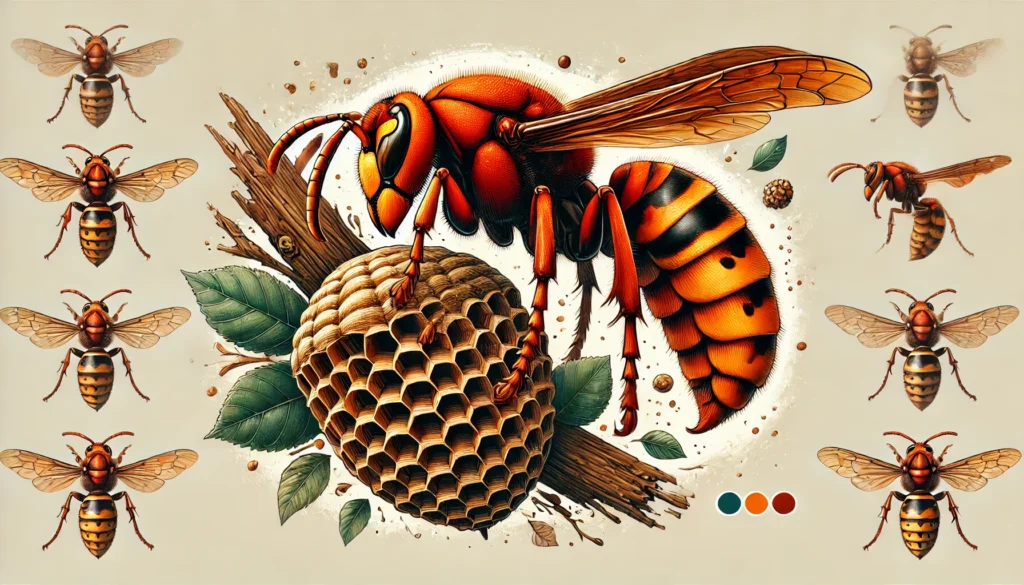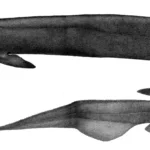The Japanese Hornet (Vespa mandarinia), also known as the Asian Giant Hornet, is one of the largest and most feared hornet species in the world. Known for its impressive size, aggressive behavior, and painful sting, the Japanese Hornet is both fascinating and intimidating. This hornet species plays a complex role in ecosystems but also presents risks to humans and other animals when disturbed. Here’s what you need to know about the Japanese Hornet and its impact on the environment.
1. The Largest Hornet in the World
The Japanese Hornet holds the title of the largest hornet species in the world. Queens can grow up to 2 inches (5 cm) long, with a wingspan that can exceed 3 inches. Worker hornets are slightly smaller but still formidable in size, making this hornet significantly larger than other species such as wasps or bees.
Its sheer size, combined with its loud, buzzing flight, makes the Japanese Hornet easily identifiable and difficult to miss when it’s nearby.
Size:
- Queens: Up to 2 inches (5 cm) in length.
- Wingspan: Over 3 inches.
- Workers: Slightly smaller but still large compared to other insects.
2. A Powerful Sting
The Japanese Hornet’s sting is not only painful but also potent. It contains venom that can cause significant pain, swelling, and in rare cases, allergic reactions or anaphylaxis in humans. The venom is potent enough to dissolve tissue, and multiple stings can be especially dangerous, causing more serious health issues.
Unlike bees, which die after stinging, hornets can sting multiple times, injecting venom with each strike. For those who are allergic to insect stings, encountering a Japanese Hornet can be particularly dangerous and may require immediate medical attention.
Sting Details:
- Venom: Contains tissue-dissolving enzymes.
- Multiple stings: Hornets can sting repeatedly without dying.
- Health risks: Allergic reactions and anaphylaxis are possible, especially after multiple stings.
3. Aggressive Defenders of Their Nests
Japanese Hornets are known for being highly territorial and aggressive when defending their nests. If the nest is disturbed, hornets can swarm and attack perceived threats in large numbers. Their aggression makes them particularly dangerous if they feel their colony is in danger.
In addition to being aggressive toward humans and animals, Japanese Hornets are notorious for attacking other insect colonies, particularly honeybees. A small group of hornets can decimate entire bee hives within hours, consuming honeybee larvae and significantly impacting local bee populations.
Aggression:
- Highly territorial: Hornets will aggressively defend their nests if threatened.
- Swarm attacks: They attack in groups, making them even more dangerous.
- Impact on honeybees: Hornets can destroy bee colonies, posing a threat to pollinators.
4. Deadly Predators of Honeybees
One of the Japanese Hornet’s most well-known traits is its ability to wipe out entire honeybee colonies. The hornets use their powerful mandibles to decapitate bees and then carry the bee larvae back to their nests to feed their own young. A single Japanese Hornet can kill up to 40 honeybees per minute, and a small group of hornets can destroy a hive of thousands of bees in just a few hours.
Honeybee populations are crucial for pollination and agriculture, and the presence of Japanese Hornets can severely disrupt ecosystems that rely on bees for pollination. While native Asian honeybees have developed defensive strategies, such as forming “bee balls” to trap and overheat the hornets, European honeybees are much more vulnerable to hornet attacks.
Predation:
- Targets honeybees: Hornets kill bees to feed their larvae.
- Efficiency: A few hornets can destroy an entire bee colony in hours.
- Impact on pollination: Loss of honeybee colonies can harm local agriculture and ecosystems.
5. Nesting Habits
Japanese Hornets typically build their nests in tree trunks, underground burrows, or hollow spaces. Unlike some wasps or smaller hornets, their nests are usually hidden, making them harder to spot. The nest can house hundreds of hornets, including workers, drones, and a single queen responsible for reproducing.
During the spring and summer, the queen lays eggs and the colony grows rapidly. By late summer and fall, the nest reaches its peak size, and this is when hornet activity is at its highest. By winter, the workers die off, and newly fertilized queens leave the nest to hibernate until the next season.
Nesting Behavior:
- Location: Often found in tree trunks, underground burrows, or hidden spaces.
- Colony size: Can grow to house hundreds of hornets.
- Seasonal activity: Most active in late summer and early fall when the colony is fully developed.
6. Native to Asia but Expanding
As the name suggests, the Japanese Hornet is native to Japan, as well as other parts of East Asia, including China, Korea, and Taiwan. However, in recent years, there have been reports of Asian Giant Hornets appearing in other parts of the world, including North America. In 2019, several sightings of Asian Giant Hornets were confirmed in Washington State and British Columbia, causing concern among local beekeepers and entomologists.
Efforts are underway to prevent the spread of these hornets, as their presence poses a significant threat to native honeybee populations and local ecosystems.
Distribution:
- Native range: Found in Japan, China, Korea, and Taiwan.
- Invasive presence: Recently spotted in parts of North America, including Washington State and British Columbia.
- Threat to ecosystems: Potential to disrupt local honeybee populations and agriculture.
7. Efforts to Control Their Spread
Given the damage Japanese Hornets can cause to honeybee populations and their threat to human safety, efforts to control their spread are essential. In regions where these hornets have been introduced, wildlife officials use traps, tracking devices, and pesticides to locate and eliminate nests. Public awareness campaigns also encourage people to report sightings so that authorities can take action before the hornets establish large colonies.
In their native regions, however, Japanese Hornets are a natural part of the ecosystem and play a role in controlling other insect populations.
Control Measures:
- Traps and tracking: Used to locate and destroy nests in areas where they are invasive.
- Public awareness: Encouraging people to report sightings for quick action.
- In native regions: Help maintain insect population balance in local ecosystems.
Conclusion
The Japanese Hornet, with its impressive size and fearsome reputation, is a fascinating yet formidable insect. While it plays an important role in its native ecosystems, its potential to disrupt honeybee populations and pose risks to humans makes it a species to be cautious of, particularly in areas where it has been introduced. Understanding the habits, behaviors, and impact of the Japanese Hornet is key to both appreciating its role in nature and managing its spread in new environments.
FAQ
What makes the Japanese Hornet dangerous?
The Japanese Hornet is dangerous due to its potent sting, which can cause pain, swelling, and in some cases, allergic reactions or anaphylaxis. It also poses a threat to honeybee populations, as it can destroy entire hives.
How big is the Japanese Hornet?
The Japanese Hornet is the largest hornet species in the world, with queens growing up to 2 inches long and wingspans that can exceed 3 inches.
What do Japanese Hornets eat?
Japanese Hornets primarily feed on other insects, including honeybees, which they decapitate to feed their larvae. They also consume nectar and tree sap.
How can I avoid a Japanese Hornet sting?
Avoid disturbing hornet nests, stay calm if a hornet is nearby, and do not swat at the insect, as this can provoke it. If you see a nest, keep your distance and alert local authorities if the species is invasive in your area.
Are Japanese Hornets invasive outside of Asia?
Yes, Japanese Hornets (Asian Giant Hornets) have been spotted in North America, where they pose a threat to honeybee populations and local ecosystems.
What should I do if I get stung by a Japanese Hornet?
If stung, clean the affected area with soap and water, apply a cold compress, and take antihistamines to reduce swelling. If you experience severe allergic reactions like difficulty breathing or swelling of the throat, seek medical attention immediately.


